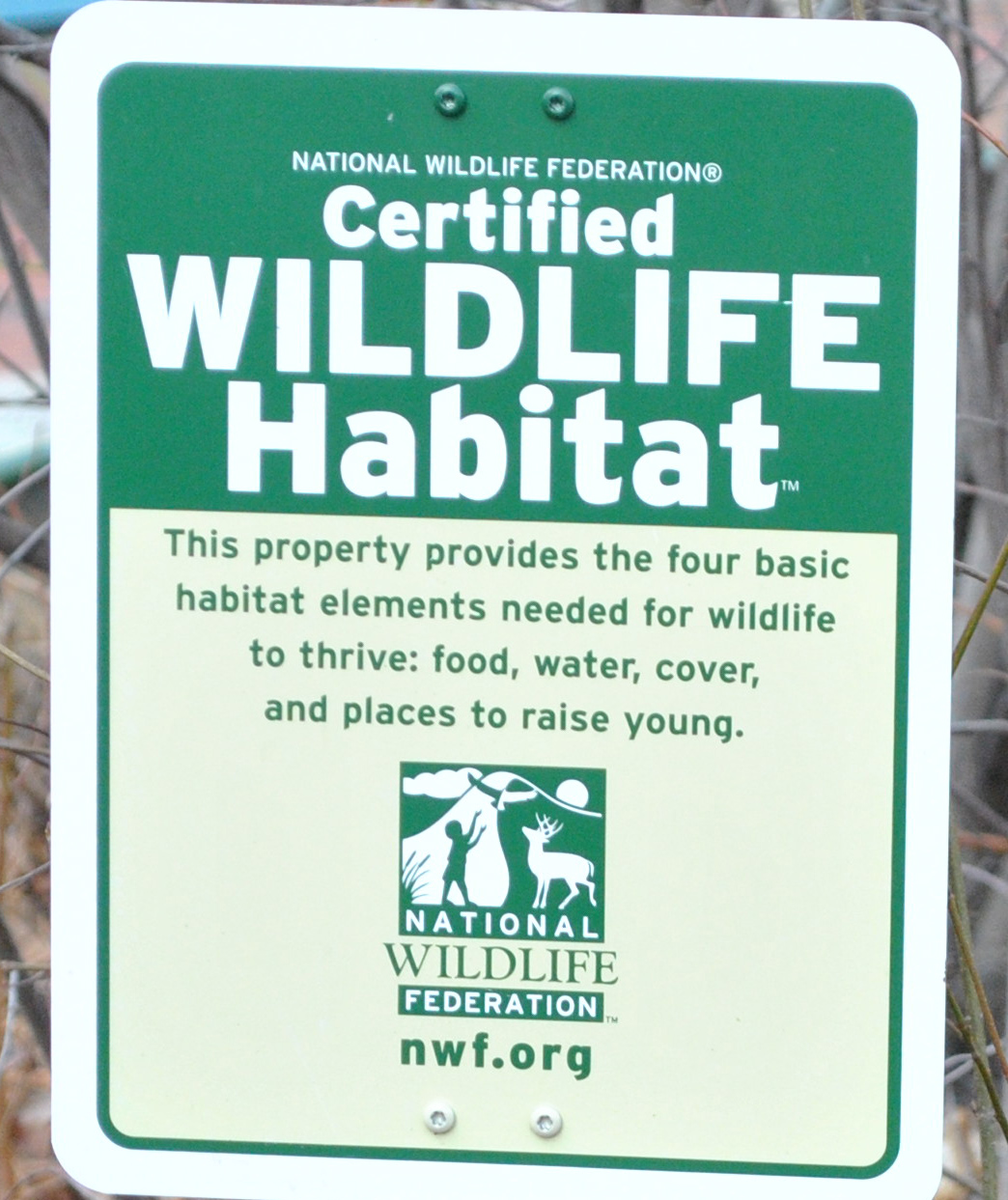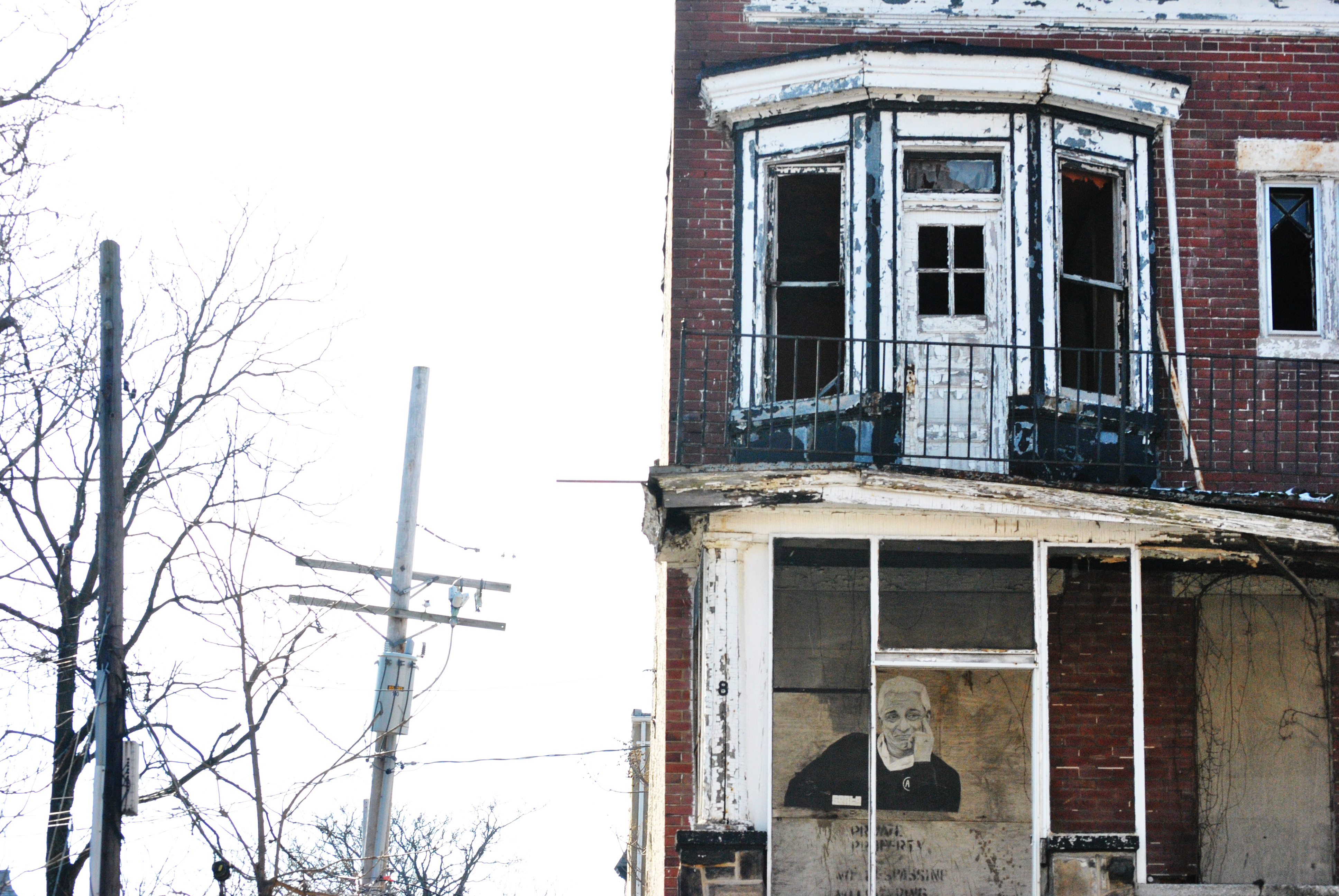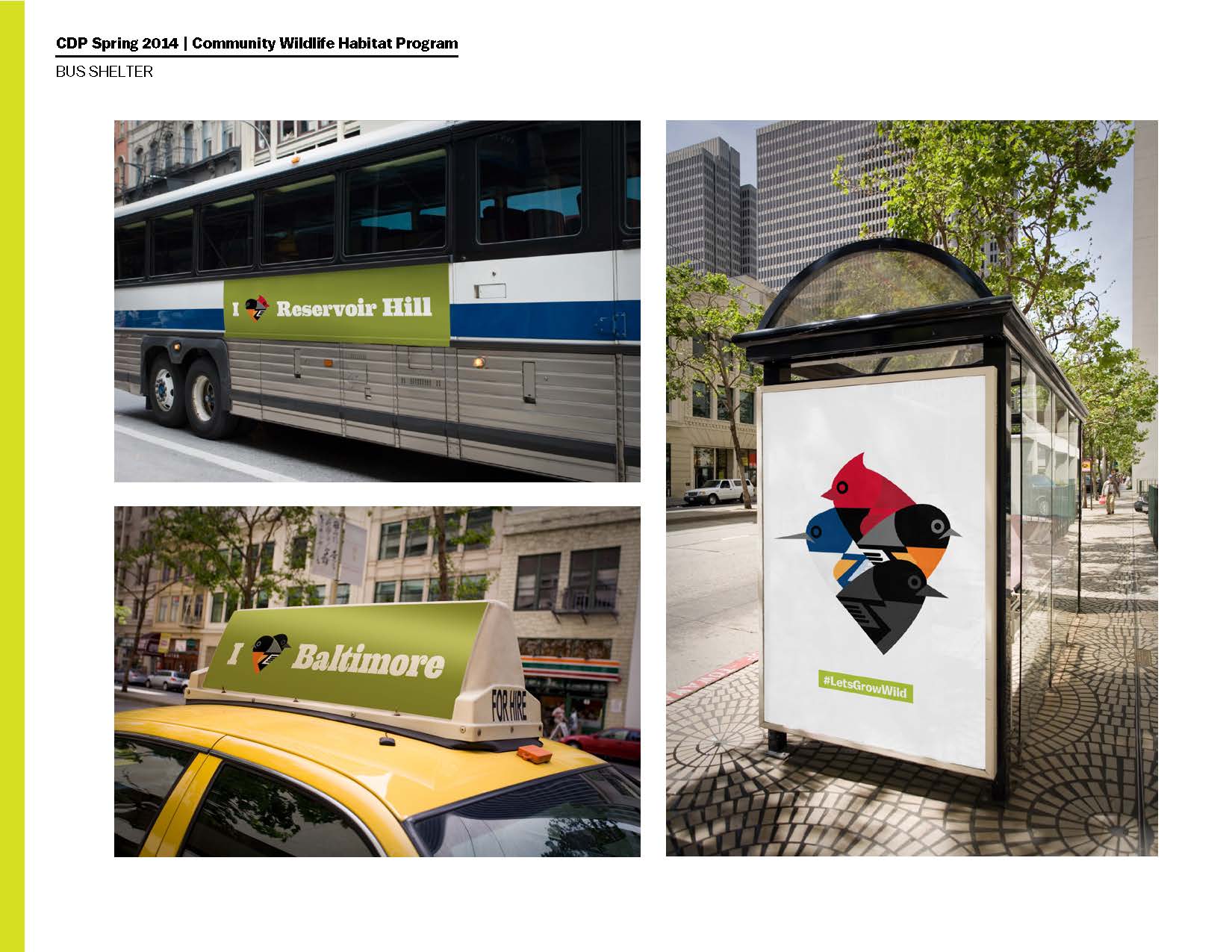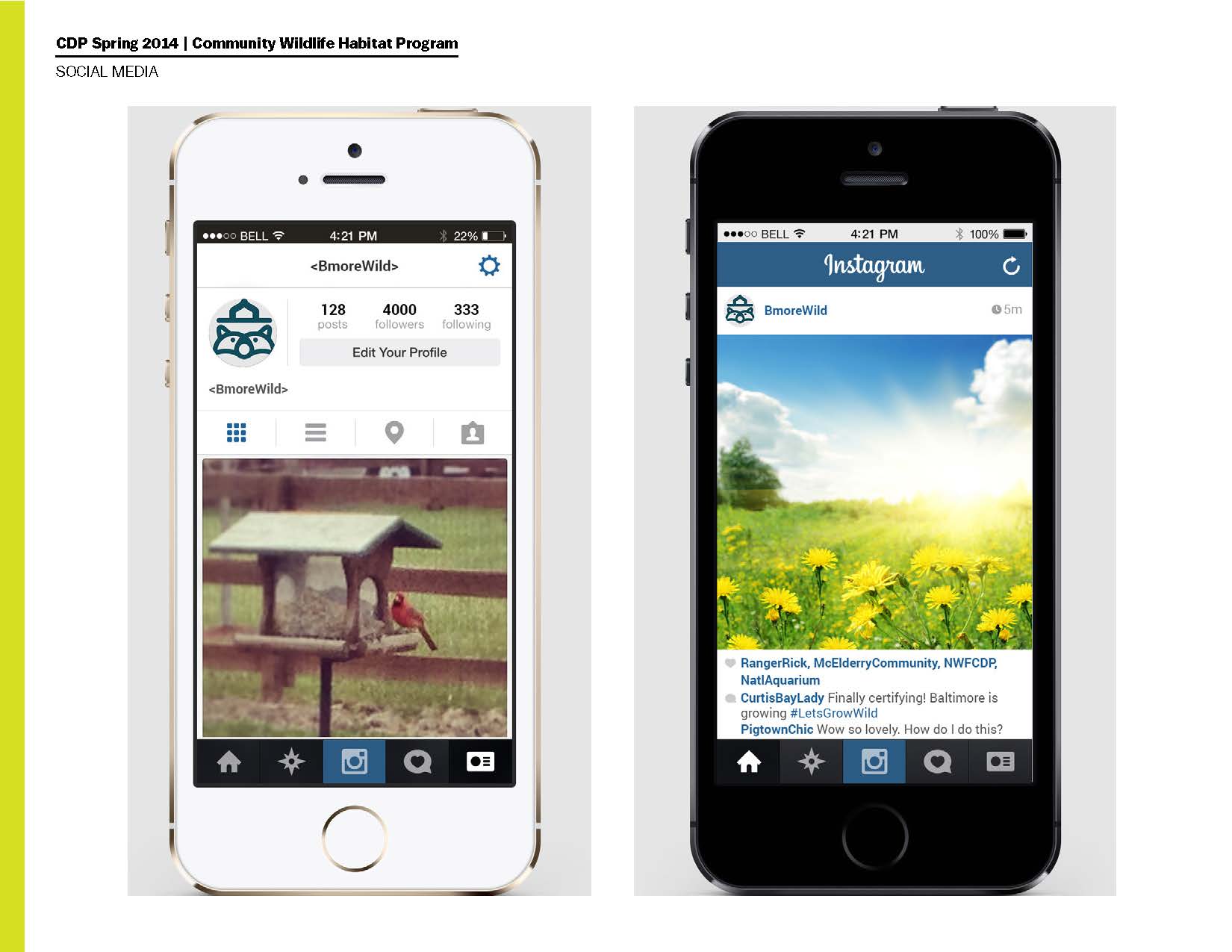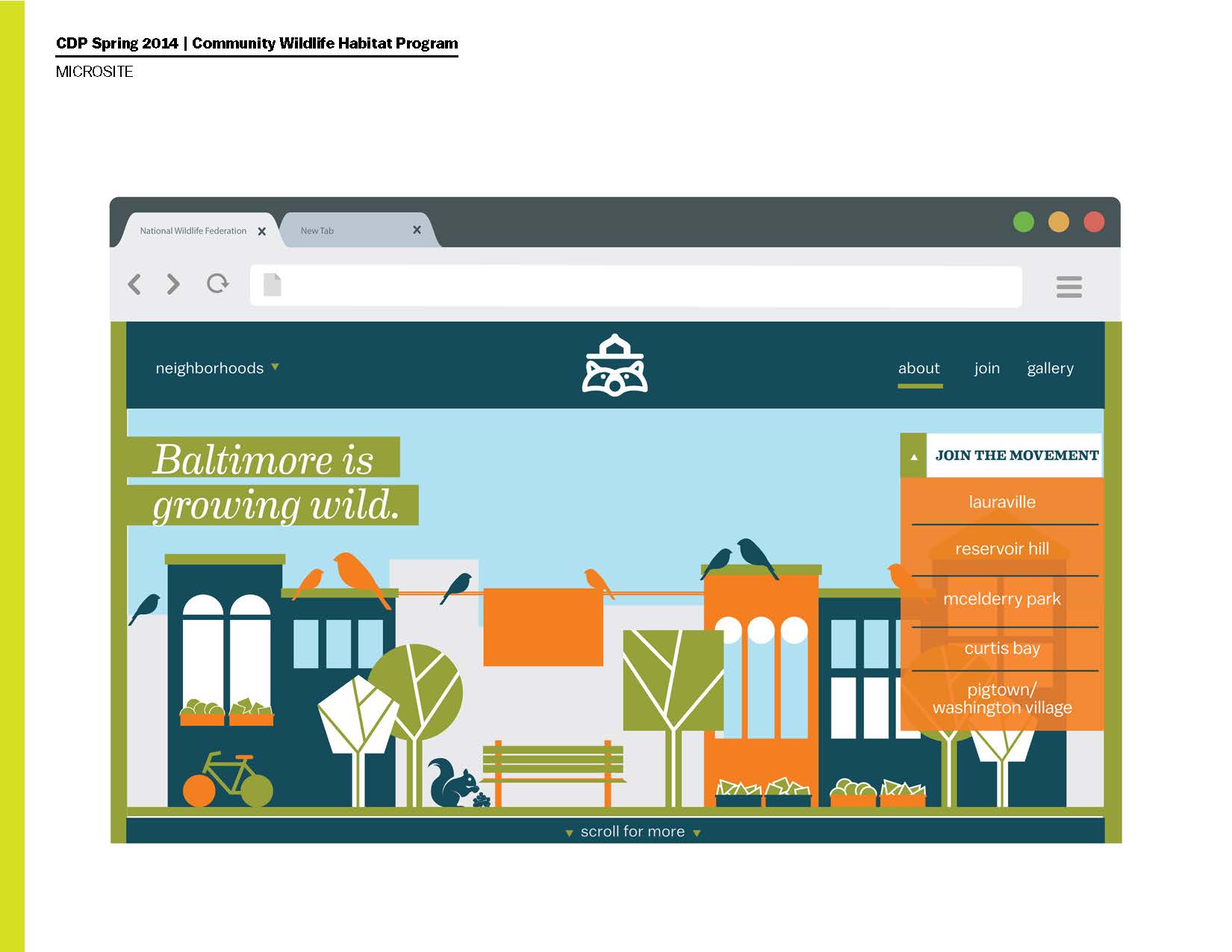Place: Center for Design Practice, Maryland Institute College of Art
Project: I spent 16 weeks with a team of six additional designers and National Wildlife Federation leaders tackling the issue of how to raise awareness for the National Wildlife Federation’s Community Wildlife Habitat program in Baltimore. I used my skills in facilitation, design thinking and leadership to help bring the team through a comprehensive design research and studio process that led to a fully-branded social and outdoor marketing campaign.
Process: As part of our Center for Design Practice studio workshop, we spend 8 of the 16 weeks on design research. We began by meeting with the key program officers in the Wildlife Habitat program to learn about their history and ask questions. The program officers had identified six neighborhoods in Baltimore that met the geographic and socio-economic profiles they believed would benefit the most from a program like this. So, we visited each of the six neighborhoods, toured their assets, visited homes that had implemented gardens, and met with community organizations/leaders about what would incentivize residents to participate in the Community Wildlife habitat program. At the end of each of the site visits, our team would regroup in the studio and share insights from the day. We also did a deep dive into the history of the National Wildlife Federation, their visual design language, and the impact of native gardens on plants. Each team member produced infographics to showcase our findings for the first eight weeks to the program officers.
In the second eight weeks of the program we paired off into teams to complete a series of brainstorming workshops, using the insights we’d gathered to design solutions. We then voted on the top concepts to prototype and set to work building out our marketing campaign ideas to showcase to our client.
Product:The final campaign “Grow Wild Baltimore” included three prongs: outreach to neighborhoods, a microsite with social media elements, and a movement. To raise awareness for the program through a grassroots movement, our team designed patches, icons, flags, murals, totes, t-shirts, way-finding signage, and more. All design elements were branded separately from the National Wildlife Federation current branding scheme to give the Grow Wild Baltimore campaign a fresh look and feel. The neighborhood outreach elements of the campaign included a strategy for and materials to use during market and school days. Additionally, we created a microsite that would bring important information about Community Wildlife Habitats directly to the neighborhoods, while also allowing people to pledge or even certify through the site. I designed the social strategy centered around these pledges a, working specifically with Instagram and Twitter.
